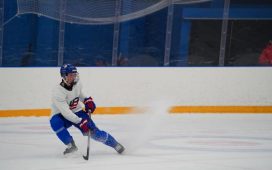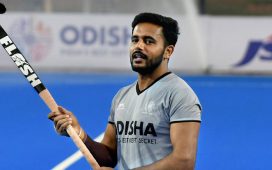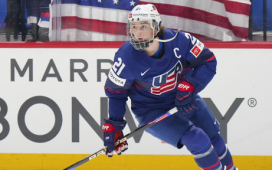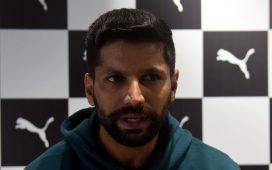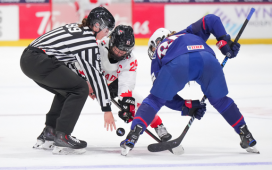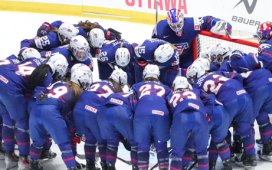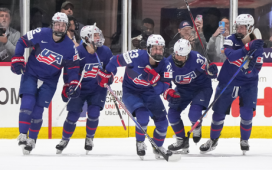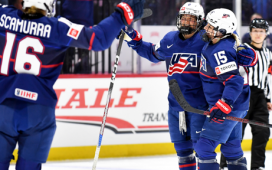This article is the third in a series examining the culture of hockey, how deep its problems may be and what some are proposing to change it.You can also read the first, senior writer Matt Larkin’s Progressive Minds Argue Need For Complete Overhaul, and the second, senior writer Ken Campbell’s How One Victim of Racism Forgave His Coach.
• • •
We’ve heard a lot about coaches behaving badly in the past two weeks, but what about the bench bosses who are a credit to the profession? I found it interesting which names former pro Jordan Samuels-Thomas highlighted on Twitter recently, so I reached out to a couple of them to find out their coaching philosophies and how they handle players in this day and age.
Rand Pecknold has been the coach of NCAA Quinnipiac since 1995, when the Bobcats weren’t even Division 1 (they weren’t even called the Bobcats – they were still the ‘Braves’). Over the years, Quinnipiac has become a solid outfit that has contested for national championships and sent players such as Connor Clifton and Devon Toews to the NHL.
John Wroblewski is one of the coaches of USA Hockey’s National Team Development Program, where this season he’s in charge of the under-17 squad. Last year he helmed the loaded under-18s, a team that included Jack Hughes, Spencer Knight and Cole Caufield (Wroblewski swaps with fellow NTDP coach Seth Appert every year so that each spends two seasons with the same kids). Wroblewski has won two gold medals at the world under-18s and also coached in the AHL and ECHL (the third coach mentioned by Samuels-Thomas was Dallas Eakins, currently in the NHL with the Anaheim Ducks).
So how do Pecknold and Wroblewski run their teams? For the Quinnipiac bench boss, it’s about identifying character early.
“What we try to do at Quinnipiac is be firm, but fair with our players,” Pecknold said. “If we do our recruiting job right, we don’t have to hand out much discipline and that’s a big part of our success: bringing in high-character kids. You want players who can be selfish at times – like when you need the confidence to make plays – but can also set that trait aside and be selfless.”
Being selfless means knowing when to make a line change, for example – and even something small like that can be the difference between a goal for your team or a goal against your team.
Wroblewski himself was influenced by character in a different way.
“I truly believe you’re a product of your environment and when I got to The Program, the coaches there were John Hynes, Ron Rolston and Tim Taylor,” he said. “We had a great melting pot for a young guy to learn from.”
From that environment, Wroblewski took the mantra of “Do what’s best for the player,” and so far, it’s been pretty effective.
“If you do what is genuinely right for the player,” he said, “it’s amazing how often that’s what is best for the team, too.”
Of course, discipline is still part of the job and there must always be accountability on a hockey team, but nowadays it can come in different forms.
“It’s about ice time now; you can give it or you can take it away,” Pecknold said. “They’re not going to respond to getting yelled at. That Mike Ditka kind of coaching style doesn’t work anymore. And we constantly remind them that it’s not personal, which is hard with young men. If they’re better, then the team is better. It’s about accountability and buy-in.”
That sentiment was echoed by Wroblewski, whose players are a couple years younger than Pecknold’s college kids.
“Sometimes it’s an arm around the shoulder, sometimes it’s hard truth,” Wroblewski said. “You might have to deny them power play time in order to help their development curve.”
What is also clear is that the current generation of teenagers come with challenges that their older bench bosses need to recognize and account for (and I’m not saying it’s a bad thing – every generation is different).
“One of the biggest things is the players now are not as complete in their details off the ice,” Wroblewski said. “They’re so dedicated to their phones and social media and a lot of their everyday activities had been taken care of for them before they got to The Program. But I’m really optimistic about how far this year’s group has come already. That’s part of the fun of coaching here – every two years you have a new canvas and you have to evolve.”
Some players still like it old-school, though.
“Timmy and Connor Clifton wanted a hard coach,” Pecknold recalled. “But most kids aren’t like that.”
Pecknold still keeps in touch with a number of former Bobcats and he says there’s no rhyme or reason to which ones do so. In fact, some of the players he butted heads with most often are the ones that still call him to this day.
At the NHL level, Eakins has guided a young and rebuilding Anaheim squad to a better-than-expected start, while Toronto’s Sheldon Keefe caught Wroblewski’s eye early with his emphasis on skill development and group work at practice, something the NTDP has found a lot of success with over the years.
Ultimately, coaches are judged on wins, losses and titles. But as hockey goes through its current revolution, it is quickly becoming clear that how a coach motivates and treats their players will be just as much a focal point.
Want more in-depth features, analysis and an All-Access pass to the latest content? Subscribe to The Hockey News magazine.
